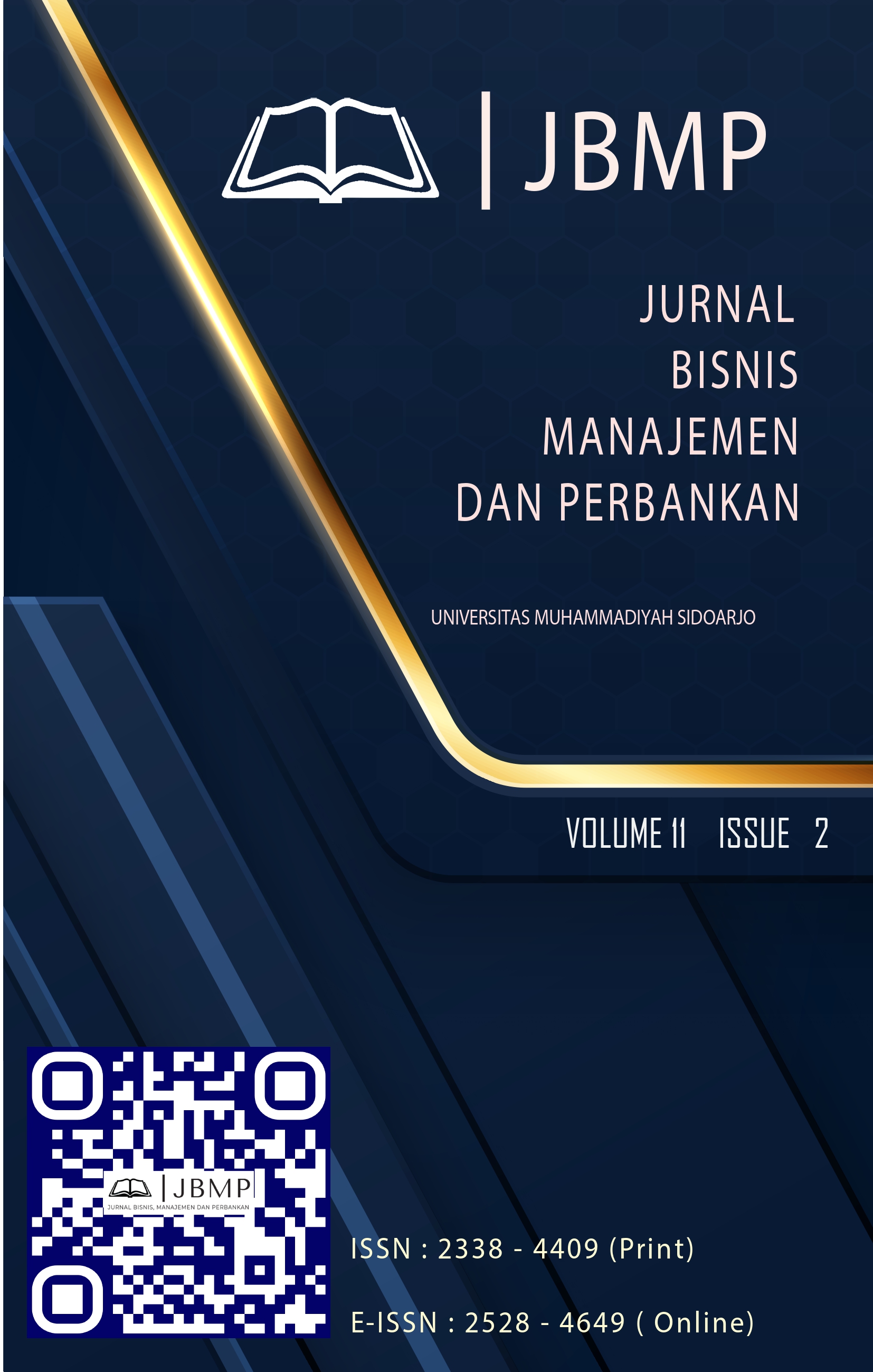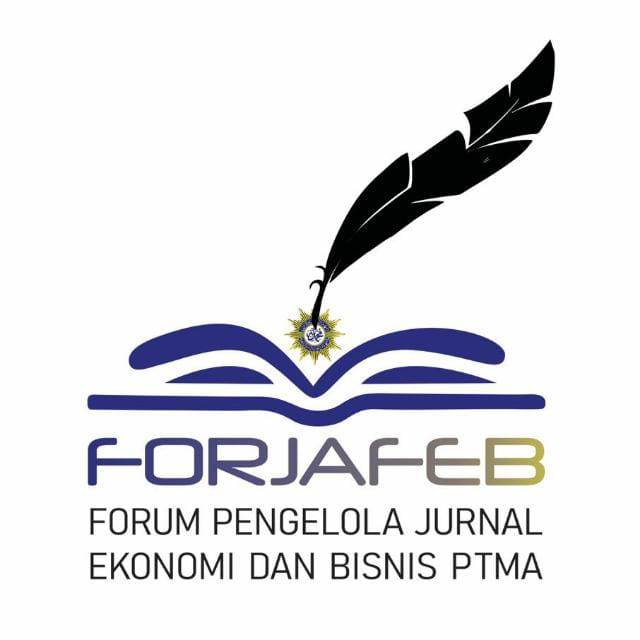How Work-Life Balance Factors and Employee Performance are Systematically Reviewed Based on Moderation and Mediation Factors in the Digital and Hybrid Work Era?
Bagaimana Faktor Keseimbangan Kerja-Kehidupan dan Kinerja Karyawan Dievaluasi Secara Sistematis Berdasarkan Faktor Moderasi dan Mediasi dalam Era Kerja Digital dan Hybrid?
DOI:
https://doi.org/10.21070/jbmp.v11i2.2163Keywords:
Work-Life Balance, employee performance, moderating factors, mediating factors, digital and hybrid work eraAbstract
This study aims to conduct a systematic review of the relationship between Work-Life Balance (WLB) and employee performance (EP), and to identify factors that moderate and mediate the relationship in the context of the digital and hybrid work era. The review was conducted by analyzing research literature from 2018-2024 published in the Scopus scientific journal. Inclusion criteria include studies that examine the relationship between WLB and EP, as well as the factors that influence the relationship. Exclusion criteria include studies that are not relevant to the digital and hybrid work context. Furthermore, article selection was carried out using the PRISMA approach and content analysis to extract key findings. The results of the review indicate that WLB has a positive relationship with EP, with several factors that moderate and mediate the relationship. Psychological well-being mediates the relationship between WLB and EP, while factors such as organizational support, workload, work flexibility, and technostress moderate this relationship. The theoretical implications of these findings are that they can broaden the understanding of the mechanisms that link WLB and EP in the digital and hybrid work era. Meanwhile, the practical implications of these findings can provide guidance for organizations in determining policies both in practice in human resource management (HRM) in an organization that supports employee WLB, so as to improve EP and achieve organization goals.
References
Abdul Jalil, N. I., Tan, S. A., Ibharim, N. S., Musa, A. Z., Ang, S. H., & Mangundjaya, W. L. (2023). The Relationship Between Job Insecurity And Psychological Well-Being Among Malaysian Precarious Workers: Work–Life Balance As A Mediator. International Journal Of Environmental Research And Public Health, 20(3), 2758. Doi: 10.3390/Ijerph20032758
Ahad, T. R., Khan, N., Subbarao, A., & Rahman, H. M. M. (2024). Unlocking Work-Life Balance: The Impact Of Participative Leadership On Reducing Emotional Exhaustion. Cogent Business & Management, 11(1). Doi: 10.1080/23311975.2024.2372456
Albert Bandura. (1997). Efikasi Diri: Pelaksanaan Pengendalian. Wh Freeman And Company. Retrieved From Https://Www.Per-Central.Org/Items/Detail.Cfm?Id=16100
Anggiwidya Garini, R., & Muafi. (2023). The Effect Of Digital Competence, Work Life Balance And Work Stress Towards Service Performance With Moderation Of Emotional Intelligence On Employees Of Pt.X.
Bataineh, K. Adnan. (2019). Impact Of Work-Life Balance, Happiness At Work, On Employee Performance. International Business Research, 12(2), 99. Doi: 10.5539/Ibr.V12n2p99
Beauregard, T. A., & Henry, L. C. (2009). Making The Link Between Work-Life Balance Practices And Organizational Performance. Human Resource Management Review, 19(1), 9–22. Doi: 10.1016/J.Hrmr.2008.09.001
Binaebi Gloria Bello, Sunday Tubokirifuruar Tula, Ganiyu Bolawale Omotoye, Azeez Jason Kess-Momoh, & Andrew Ifesinachi Daraojimba. (2024). Work-Life Balance And Its Impact In Modern Organizations: An Hr Review. World Journal Of Advanced Research And Reviews, 21(1), 1162–1173. Doi: 10.30574/Wjarr.2024.21.1.0106
Borgia, M. S., Di Virgilio, F., La Torre, M., & Khan, M. A. (2022). Relationship Between Work-Life Balance And Job Performance Moderated By Knowledge Risks: Are Bank Employees Ready? Sustainability, 14(9), 5416. Doi: 10.3390/Su14095416
Cijan, A., Jenič, L., Lamovšek, A., & Stemberger, J. (2019). How Digitalization Changes The Workplace. Dynamic Relationships Management Journal, 8(1), 3–21. Doi: 10.17708/Drmj.2019.V08n01a01
Demerouti, E., Bakker, A. B., Nachreiner, F., & Schaufeli, W. B. (2001). The Job Demands-Resources Model Of Burnout. Journal Of Applied Psychology, 86(3), 499–512. Doi: 10.1037/0021-9010.86.3.499
Ganster, D. C., & Schaubroeck, J. (1991). Work Stress And Employee Health. Journal Of Management, 17(2), 235–271. Doi: 10.1177/014920639101700202
Gatrell, C. J., & Cooper, C. L. (2008). Work-Life Balance: Working For Whom? European J. Of International Management, 2(1), 71. Doi: 10.1504/Ejim.2008.016929
Gore, M. N. (2024). Loss Of Work-Life Balance, Experience Of Stress And Anxiety Among Professionals Working From Home - An Exploratory Study In A Western Indian City. International Journal Of Occupational Safety And Health, 14(3), 374–383. Doi: 10.3126/Ijosh.V14i3.50751
Haider, S., Jabeen, S., & Ahmad, J. (2018). Moderated Mediation Between Work Life Balance And Employee Job Performance: The Role Of Psychological Wellbeing And Satisfaction With Coworkers. Revista De Psicología Del Trabajo Y De Las Organizaciones, 34(1), 29–37. Doi: 10.5093/Jwop2018a4
Hanzis, A., & Hallo, L. (2024). The Experiences And Views Of Employees On Hybrid Ways Of Working. Administrative Sciences, 14(10), 263. Doi: 10.3390/Admsci14100263
Hill, E. J., Miller, B. C., Weiner, S. P., & Colihan, J. (1998). Influences Of The Virtual Office On Aspects Of Work And Work/Life Balance. Personnel Psychology, 51(3), 667–683. Doi: 10.1111/J.1744-6570.1998.Tb00256.X
Ibrahim, A. M., Osman, M. H., Gusau, A. L., & Vi, P. (2021). Correlation Of Technostress Creators With Employees’ Work-Life Balance In The Context Of Journalists’ Use Of Information And Communication Technology At Work: Moderating Role Of Self-Efficacy. International Journal Of Media And Information Literacy, 6(2). Doi: 10.13187/Ijmil.2021.2.338
Isa, M., & Indrayati, N. (2023). The Role Of Work–Life Balance As Mediation Of The Effect Of Work–Family Conflict On Employee Performance. Sa Journal Of Human Resource Management, 21. Doi: 10.4102/Sajhrm.V21i0.1910
J.H. Greenhaus, & T.D. Allen. (2011). Handbook Of Occupied Health Psychology (J.C. Quick & L.E. Tetrick, Eds.; 2nd Ed.). American Psychological Association. .
M. Hasanein, A., & Ayad, T. H. (2024). Unlocking Potential: Understanding The Role Of Work-Life Balance And Affective Commitment In Driving Employees’ Performance At The Hospitality Sector. Environment And Social Psychology, 9(10). Doi: 10.59429/Esp.V9i10.3132
Made Mulyadi, Ni Wayan Sitiari, I Wayan Meryawan, & Luh Gede Elvina Adi Saputri. (2024). The Role Of Workload, Work Life Balance And Psychological Towards Employee Performance Through Work Stress As Mediation. Quality-Access To Success, 25(200). Doi: 10.47750/Qas/25.200.15
Maken, P., & Aggarwal, Dr. K. (2021). Work-Life Balance: A Study Of Selected Nationalized Banks In Ambala District (Haryana). International Journal Of Scientific Research In Science And Technology, 203–213. Doi: 10.32628/Ijsrst218215
Malik, N. (2023). Organizations Should Maintain Employee’s Work-Life Balance. Journal Of Economics, Finance And Management Studies, 06(08). Doi: 10.47191/Jefms/V6-I8-29
Mandracchia, F., Llauradó, E., Tarro, L., Del Bas, J. M., Valls, R. M., Pedret, A., Radeva, P., Arola, L., Solà, R., & Boqué, N. (2019). Potential Use Of Mobile Phone Applications For Self-Monitoring And Increasing Daily Fruit And Vegetable Consumption: A Systematized Review. Nutrients, 11(3), 686. Doi: 10.3390/Nu11030686
Manivannan, J., Loganathan, S., T J, K., & N. Kalidindi, S. (2022). Investigating The Relationship Between Occupational Stress And Work-Life Balance Among Indian Construction Professionals. Construction Economics And Building, 22(2). Doi: 10.5130/Ajceb.V22i2.8052
Na-Nan, K., Kanthong, S., & Joungtrakul, J. (2021). An Empirical Study On The Model Of Self-Efficacy And Organizational Citizenship Behavior Transmitted Through Employee Engagement, Organizational Commitment And Job Satisfaction In The Thai Automobile Parts Manufacturing Industry. Journal Of Open Innovation: Technology, Market, And Complexity, 7(3), 170. Doi: 10.3390/Joitmc7030170
Nazneen, A. (2023). A Study Work Life Balance And Employee Engagement Among Female Medical Professionals In Kingdom Of Saudi Arabia. Wseas Transactions On Business And Economics, 20, 1997–2008. Doi: 10.37394/23207.2023.20.174
Ng, C., Wider, W., Yang, C., Jiang, L., Vasudevan, A., Bhandari, P., & Lee, H. P. T. (2024). Keys Factor Affecting Employee Performance In The Banking Sector: A Delphi Study. Cogent Business & Management, 11(1). Doi: 10.1080/23311975.2024.2409942
Paulus Robert Tuerah, Manuel E. Korompis, Grystin Djein Sumilat, Nismawati, & Eric Kondoy. (2024). The Influence Of Social Change On Human Resource Management Strategies In The Digital Era. Technium Education And Humanities, 9(2), 36–42. Doi: 10.47577/Teh.V9i.12018
Permana Putra, I. D. M. A., Putra, I. G. C., & Yuliastuti, I. A. N. (2024). Competence, Work Life Balance, Work Ethic And Performance Of Cooperative Employees In Abiansemal District.
Poelmans, S. A., Kalliath, T., & Brough, P. (2008). Achieving Work–Life Balance: Current Theoretical And Practice Issues. Journal Of Management & Organization, 14(3), 227–238. Doi: 10.1017/S1833367200003242
Qadri, N. (2024). Exploring The Impact Of Work-Life Balance On Job Satisfaction For Saudi Private Sector C-Level Employees. International Journal Of Business Analytics, 11(1), 1–19. Doi: 10.4018/Ijban.351217
Saim, M. A. S., Wan Rashid, W. E., & Ma’on, S. N. (2021). The Relationship Between Technostress Creator And Work-Life Balance At Selected Private Sector In Selangor. International Journal Of Academic Research In Business And Social Sciences, 11(6). Doi: 10.6007/Ijarbss/V11-I6/10389
Scholarios, D., & Marks, A. (2004). Work‐Life Balance And The Software Worker. Human Resource Management Journal, 14(2), 54–74. Doi: 10.1111/J.1748-8583.2004.Tb00119.X
Shaari, R., Sarip, A., Abdul Wahab, S. R., & Md Saat, S. N. A. (2022). Work-Life Balance And Employee Performance In Selected Manufacturing Company. International Journal Of Academic Research In Business And Social Sciences, 12(9). Doi: 10.6007/Ijarbss/V12-I9/14727
Smith, K. T. (2009). Wlb Perspectives Of Future Marketing Professionals. In Ssrn Electronic Journal.Relx Group (Netherlands). .
Stachová, K., Stacho, Z., & Stasiak-Betlejewska, R. (2023). Transformation Of Work-Life Balance Perception In Cee Countries In The Post-Pandemic Era. Polish Journal Of Management Studies, 27(1), 312–326. Doi: 10.17512/Pjms.2023.27.1.18
Trianaa, N., & Suratman, A. (2022). The Influence Of Work Life Balance And Work Discipline On Employee Performance.
Wentling, R. M. (1998). Work And Family Issues: Their Impact On Women’s Career Development. New Directions For Adult And Continuing Education, 1998(80), 15–24. Doi: 10.1002/Ace.8002
Widjaja, W., Wijayadne, D. R., & Michael, M. (2024). Work Dynamics In Retail Industry: Impact Of Work Intensification.
Wiradendi Wolor, C., Nurkhin, A., & Citriadin, Y. (2021). Is Working From Home Good For Work-Life Balance, Stress, And Productivity, Or Does It Cause Problems? Humanities And Social Sciences Letters, 9(3), 237–249. Doi: 10.18488/Journal.73.2021.93.237.249.
Downloads
Published
Issue
Section
License
Copyright (c) 2025 Ahmad Fauzan Fadlan, Sukirman, Syafaat Nuryadi, Nandan Limakrisna

This work is licensed under a Creative Commons Attribution 4.0 International License.








